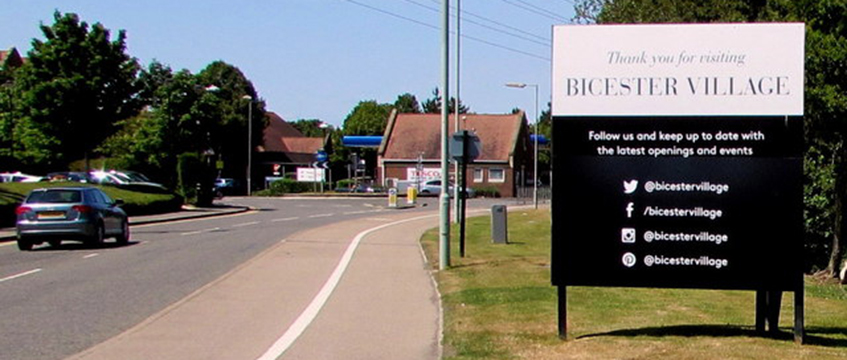 Once considered the domain of bargain hunters looking to make the most of discounted surplus stock from last season’s collections, outlets have undergone a significant image change, writes Timon Drakesmith.
Once considered the domain of bargain hunters looking to make the most of discounted surplus stock from last season’s collections, outlets have undergone a significant image change, writes Timon Drakesmith.
The winning combination of premium inventory and best-in-class customer experience draws tourists and wealthy locals, driving high levels of footfall and consistently high revenue growth.
With more high-end brands discovering the benefits of expanding in this retail channel, outlets have outperformed the retail property market, with data showing a like-for-like sales growth in Europe of 7.5% in 2016 (FSP report, March 2017).
Yet the outlet market remains relatively small, with only around 200 centres in Europe today. With the potential for such attractive returns this might seem illogical; however, there are significant barriers to entry that prevent the market from becoming saturated.
First, planning and trading consents can be difficult to obtain, often with opposition from town centres and other retail destinations. Secondly, leasing strategies for outlets require a strong relationship with driver brands – without which specialist landlords struggle to achieve an optimum tenant mix.
On the other side of the coin, attracting the right visitors is not always an easy task, even with an attractive tenant mix. Targeted marketing campaigns aimed at a wide range of global source markets are necessary to lure international shoppers.
However, for established premium outlets, the absence of new competitors is hugely beneficial, creating a feeling of exclusivity and ensuring that the sector maintains its high growth characteristics.
According to CBRE research, UK outlet centres have achieved average annual sales growth of 10% in the last few years – far ahead of UK national consumer spending statistics. And this trend looks set to continue as the demand for designer clothing increases.
Overseas impact
The increase of overseas spend following the devaluation of sterling has also had an impact, encouraging visitors from the US and Asia to take advantage of the favourable exchange rate. This has accelerated recently, with the ONS recording an 18% increase in holidaymakers arriving in the UK in the three months to March 2017.
Despite a widening of visitor nationalities, in particular from the Middle East and South East Asia, shoppers from China remain the dominant force at high-end outlets. Chinese shoppers spend an eye-watering £2,174 each on average during their stay in the UK, and with double digit growth recorded in February, according to Global Blue, the trend shows no signs of abating.
For Chinese tourists in the UK, Bicester Village near Oxford is the second most sought-after trip after Buckingham Palace. And considering that only 4% of the Chinese population is estimated to own a passport, the potential for growth is huge.
Hammerson is exposed to this fast-growing sector through our investments in 19 outlet centres. We made the decision to invest in Bicester Village back in 1998 and have increased our exposure to the wider value retail business significantly since then, more recently supporting the expansion of VIA Outlets.
What was a small investment into a relatively unknown and therefore somewhat risky sector has become a big success story for the group, and with the addition of five new outlet centres in the past year, premium outlets now represent close to a fifth of Hammerson’s total portfolio.
Future success
Looking ahead, we remain confident in the outlook for outlets. International fashion brands now consider outlets to be a crucial distribution channel and an opportunity to enhance their consumer profile. It is imperative that this occupier demand is accommodated skilfully.
This is why refurbishments and extensions are integral to the future success of our portfolio. At Bicester Village for example, a planned extension due to open in October of this year will add a further 34 units to the outlet, which already has its own train station with a luxury staffed waiting room that brings visitors directly from London Marylebone. The station has seen more than a million people pass through it since its opening in October 2015, according to data from Chiltern Railways, and train visits now account for 12% of all footfall.
In Amsterdam, the recent extension to Batavia Stad welcomed 41 new tenants, and at Alcochete, Portugal, reconfiguration works are ongoing in order to attract more high quality brands, increase dwell time and transform the customer experience for its prime catchment, which includes Brazilian and Angolan tourists.
We remain confident that these special retail destinations, which have enjoyed a post-Brexit vote moment in the spotlight, will continue to lure shoppers and brands, delivering high levels of sales and rental growth.
Timon Drakesmith is chief financial officer and managing director, premium outlets, at Hammerson











